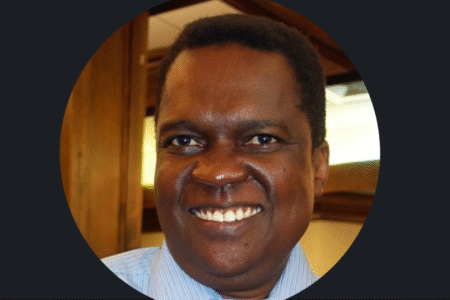Green Success Stories sat down with Melissa Farney, Director of Marketing for TECfusions. Melissa describes the way TECfusions designs and deploys more efficient, adaptive reuse solutions for data centers that reduce environmental impact and accelerate innovation. She likewise describes her personal efforts at building a self-sustaining farm, guided by the principles of circularity. She hopes readers recognize that meaningful change starts with each of us, right where we are.

Tell us a bit about your sustainability journey.
Sustainability has been a core thread throughout my entire career. From the start—whether working in software, logistics, or power distribution—I’ve always sought out opportunities to support and promote sustainable solutions. Now, in the data center industry, that passion has truly come full circle, as we focus on designing and deploying more efficient, adaptive reuse facilities that reduce environmental impact and accelerate innovation.
On a personal level, my commitment to sustainability runs just as deep. I’m currently building a self-sustaining farm, guided by the principles of circularity. For me, it’s not just about conserving resources—it’s about respecting the delicate balance between human vitality and the health of our planet. The way we treat our environment directly influences our own well-being, and I believe strongly in giving back to the earth as much as we take from it.
I might add that I am an author in the Greener Data series of books, under my previous name, Melissa Reali-Elliott. I had a chapter in both published volumes and am committed to submitting for the third volume, which will publish on Earth Day of 2026.
Tell us a bit about the product or solution you offer.

At TECfusions, we specialize in adaptive reuse solutions for data centers, which means we repurpose existing structures to enable faster deployment and a reduced environmental footprint. By giving new life to pre-existing buildings, we’re able to speed up time to market while conserving materials and minimizing construction waste. Our approach not only supports sustainability goals but also delivers high-performance, scalable solutions that meet the evolving demands of modern digital infrastructure. Whether it’s our work at our flagship Clarksville, VA location or beyond, we’re deeply focused on innovation that blends operational excellence with environmental responsibility.
An essential part of our solution is our integration of microgrids and natural gas power generation. Microgrids allow us to enhance energy resilience, improve efficiency, and support more sustainable operations by optimizing on-site power generation and distribution. Leveraging cleaner-burning natural gas as part of this strategy enables us to provide a reliable, lower-emission energy source that bridges the transition to even greener technologies in the future. By combining these energy solutions with our adaptive reuse approach, we’re helping pave the way for more sustainable, future-ready data center environments.

Share a green success story with us – how have you helped customers or other businesses in the fight against climate change?
One of our proudest green success stories is the transformation of our Clarksville, VA facility. What was once an underutilized structure has been repurposed into a state-of-the-art data center, dramatically reducing the need for new construction materials and preserving the embedded carbon of the original building. By leveraging adaptive reuse, we not only accelerated deployment timelines but also significantly reduced environmental impact compared to a traditional ground-up build.
Beyond the building itself, we’ve implemented on-site microgrids and natural gas power generation to improve energy efficiency and resilience. These systems reduce reliance on traditional grid power and allow for smarter, cleaner energy use. It’s a model of how infrastructure can evolve to meet today’s critical demands while keeping sustainability at the forefront. Seeing this come to life has been incredibly rewarding, especially knowing we’re helping our tenants meet both their digital and environmental goals.
What would you do with $1 billion dollars?
With $1 billion, I would invest in two transformative projects that reflect both my professional mission and personal passion for sustainability. First, I would bring to life an edge data center concept that I’ve envisioned for years. These smaller, decentralized data centers reduce latency and energy consumption while bringing computing power closer to the source of demand to create a network of edge facilities that would help decentralize infrastructure and lower the environmental footprint of digital operations.
Second, I would build out my personal farm into a fully self-sustaining ecosystem — my own version of Atlantis, thoughtfully cultivated to promote biodiversity, regenerative agriculture, and true circularity. It would be a living example of how we can work in harmony with the land, giving back as much as, if not more than, we take.
Both projects are dear to my heart and would serve as models for how smart design and intentional stewardship of resources can create a more sustainable future.
What do you envision your industry looking like in ten years?
In 10 years, I see the data center industry evolving into a much more sustainable, decentralized, and resilient ecosystem. The days of massive, centralized facilities will start to give way to more agile solutions like edge data centers and microgrids, enabling lower latency, localized power generation, and better integration of renewable energy sources. I believe adaptive reuse will have to become a standard practice, rather than the exception. Rethinking how we build and power digital infrastructure will be essential to meet both climate goals and growing data demands.
We’ll also see greater transparency and accountability across the industry, with many operators prioritizing carbon tracking, energy efficiency, and circular resource management as part of their core strategies. It’s an exciting time because the choices we make today will directly shape a greener, more responsible digital future.
What would you like readers to take away from this article?
I hope readers come away with the understanding that meaningful change starts with each of us, right where we are. It’s not just about mandates or regulations — it’s about individual responsibility and the choices we make every day. We all have our own sphere of influence, and when we commit to doing the best we can within that space, those efforts add up to real, impactful progress. Sustainability isn’t a finish line; it’s an ongoing journey, and it thrives when we each take ownership of our role in this world.
How should readers get in touch with you and/or your organization?
Readers should follow TECfusions across all of our social channels and check our website frequently for the latest updates. They may also reach out to me on any social media platform to further discuss sustainable data center operations.
Kudos
Many thanks to Melissa Farney and to TECfusions. Green Success Stories is happy to support and highlight your efforts! We invite you the reader to do the same.
About Green Success Stories
Green Success Stories is a media platform that highlights leaders in sustainability and climate tech.
We offer professional writing (articles, blogposts, case studies, and more) combined with social media promotion. You get great content + exponential publicity. As a starting offer, we’d like to feature you and your organization in a FREE PROFILE ARTICLE. There’s no obligation, but we’d appreciate you considering our services. Let us know if you’re interested and we’ll share more information.
Support Green Success Stories
Like what we’re doing? Please pitch in and help us highlight leaders in the fight against global warming.





